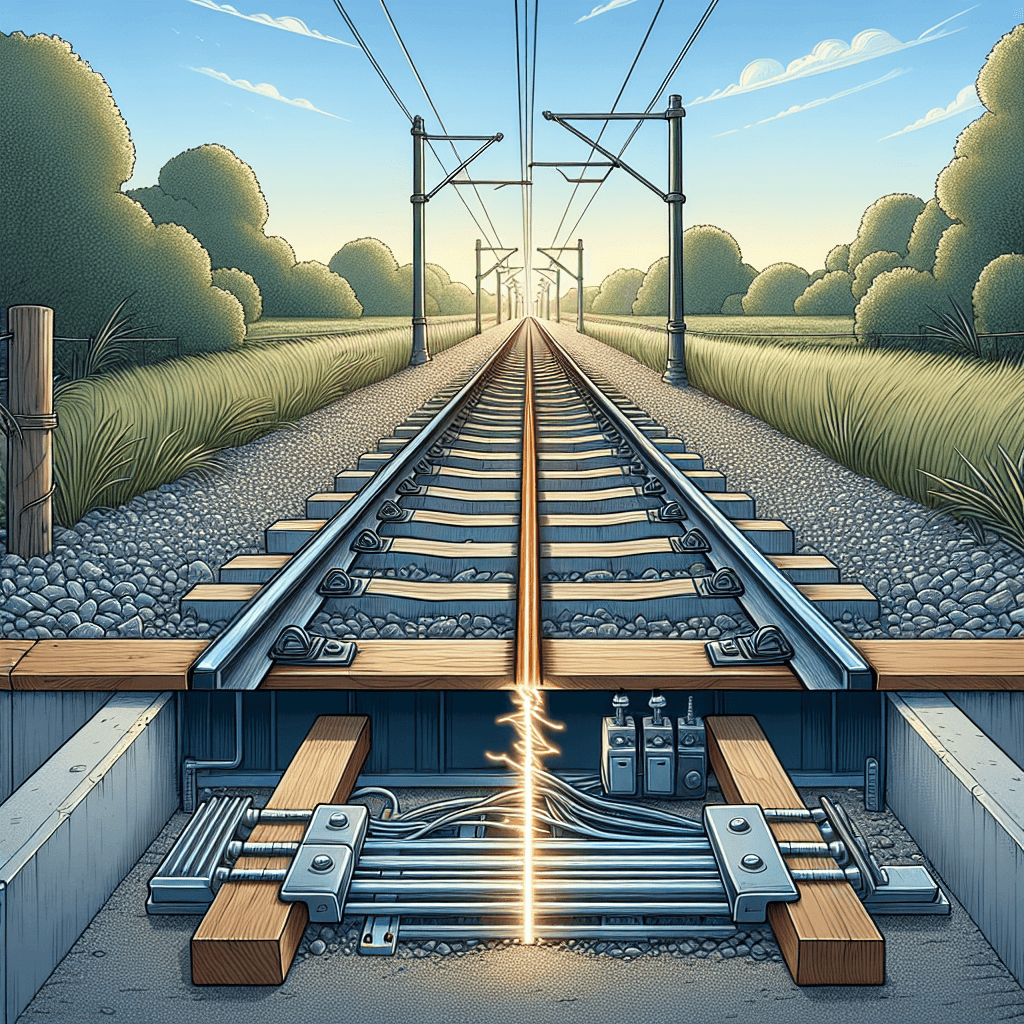What is that extra electrified rail running alongside some train tracks
That extra rail isn't a spare track—it's a high-voltage powerhouse carrying a fatal charge, and it's the hidden secret to how our busiest transit systems work.


Too Long; Didn't Read
TLDR: That extra rail is a third rail. It is a live, high-voltage electrical conductor that powers the train through a sliding contact shoe, acting as an alternative to overhead lines. It is extremely dangerous to touch.
Demystifying the Tracks: What Is That Extra Electrified Rail Running Alongside Some Train Tracks?
Have you ever stood on a station platform, looked down at the tracks, and noticed a third, thicker rail running parallel to the main two? It often sits slightly elevated on ceramic insulators and can look deceptively ordinary. This unassuming piece of metal, however, is one of the most critical and dangerous components of many modern railway systems. It’s the powerhouse that drives the train, delivering a constant, high-voltage electrical current. This blog post will demystify this essential piece of infrastructure, explaining what the third rail is, how it works, why it's used, and the vital safety measures surrounding it.
The Power Conductor: What Exactly is the Third Rail?
The extra rail is known as a third rail, and its sole purpose is to supply high-voltage electricity to a train's motors. Unlike diesel trains that carry their own fuel, or electric trains that draw power from overhead lines (a system called catenary), third-rail systems deliver power from the ground up.
This rail acts as a continuous electrical conductor, carrying a powerful direct current (DC) from trackside substations. These substations are connected to the main power grid, converting high-voltage alternating current (AC) into the lower-voltage DC needed for the trains. The third rail is a simple, robust, and effective way to power trains, especially in urban metro systems, subways, and some suburban rail networks.
The Science of Motion: How a Third Rail Powers a Train
The process of transferring electricity from a stationary rail to a moving train is a marvel of electromechanical engineering. It works through a straightforward circuit:
- Power Transmission: Electricity flows from the substation into the third rail, making it continuously "live." The voltage can vary, but it's often between 600 and 750 volts—more than enough to be lethal.
- Collection: Each powered car of the train is fitted with a metal contact block called a "collector shoe." This shoe is mounted on the side of the train's wheel truck and is designed to slide along the third rail, collecting the electrical current.
- Powering the Motors: The current travels from the collector shoe up into the train's electrical systems, where it powers the traction motors that turn the wheels.
- Completing the Circuit: To complete the electrical circuit, the current flows out of the motors, through the train's wheels, and into the two main running rails. These running rails then act as the return path, carrying the current back to the substation.
Third Rail vs. Overhead Lines: Pros and Cons
Railway engineers must choose between a third rail and overhead lines when designing an electric railway. Each system has distinct advantages and disadvantages.
-
Advantages of the Third Rail:
- Lower Cost: It is generally cheaper to install and maintain than complex overhead catenary systems.
- Less Visual Intrusion: The lack of poles and wires makes it ideal for areas where aesthetics are a concern, such as historic city centers.
- Tunnel Clearance: It requires far less vertical space, making it the preferred choice for tunnels and underground systems with tight height restrictions.
- Weather Resilience: It is less susceptible to damage from high winds or falling tree branches compared to overhead lines.
-
Disadvantages of the Third Rail:
- Extreme Safety Hazard: Its location at ground level presents a severe and constant danger of electrocution to anyone trespassing on the tracks.
- Weather Vulnerability: It can be easily disrupted by snow and ice buildup, which can prevent the collector shoe from making proper contact.
- Speed Limitations: Gaps in the third rail are necessary at track junctions and level crossings, which can interrupt power. This, along with mechanical factors, generally limits train speeds to around 100 mph (160 km/h), making it unsuitable for high-speed rail.
High Voltage, High Danger: The Unseen Hazard
It cannot be stressed enough: the third rail is incredibly dangerous. It carries a live current 24/7, and accidental contact is almost always fatal. For this reason, you will often see a protective fiberglass or wooden cover board placed over or alongside the rail. However, this cover is only intended to protect the rail from debris and prevent accidental contact from above—it does not make it safe to touch. Trespassing on any railway line is dangerous, but on a line equipped with a third rail, it is a life-threatening risk. The only safe place to be is on the platform, far behind the yellow line.
In conclusion, that extra electrified rail is a core component of many of the world's most vital transit systems, from the London Underground to the New York City Subway. It is an efficient and cost-effective method for powering trains, especially in constrained environments like tunnels. While it offers clear benefits in terms of construction and maintenance, its ground-level position makes it an ever-present danger that demands absolute respect. So, the next time you see that third rail, you can appreciate the powerful engineering that gets you from A to B, while understanding why staying clear of the tracks is a matter of life and death.


